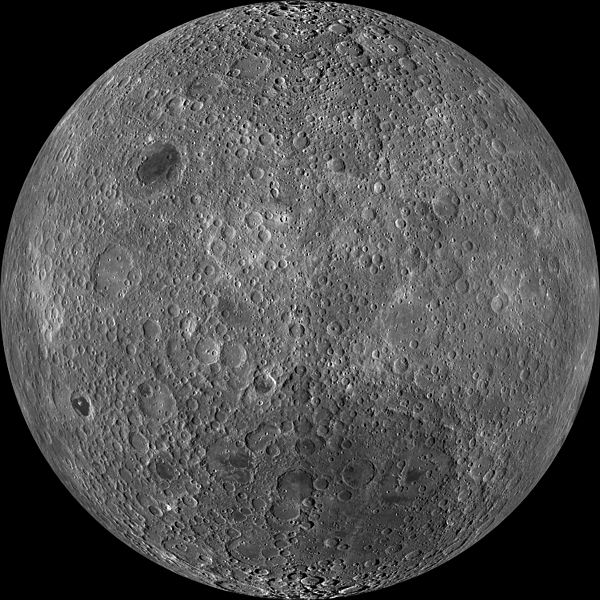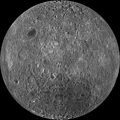Datei:Moon Farside LRO.jpg

Heh di Vör_Aanseesch es 600 Pixelle breed × 600 Pixelle huh jruuß. Ander Oplühsunge: 240 Pixelle breed × 240 Pixelle huh · 480 Pixelle breed × 480 Pixelle huh · 768 Pixelle breed × 768 Pixelle huh · 1024 Pixelle breed × 1024 Pixelle huh · 2048 Pixelle breed × 2048 Pixelle huh · 18 000 Pixelle breed × 18 000 Pixelle huh.
Ojinaal-Dattei (18 000 Pixelle breed × 18 000 Pixelle huh, de Datei hät 85,34 MB, de MIME-Zood es: image/jpeg)
De Väsjohne vun dä Dattei
Di domohlije Version kriß De jezeich övver dä Link op em Dattum.
| Väsjohn vom | Minni-Belldsche | Pixelle Breed×Hühte (Dateiömfang) | Metmaacher | Aanmärkong | |
|---|---|---|---|---|---|
| Von jetz | 01:47, 20. Mäz 2014 |  | 18 000 × 18 000 (85,34 MB) | Huntster | High resolution mosaic. |
| 06:12, 9. Apr 2011 |  | 1600 × 1600 (1,44 MB) | Bubba73 | {{Information |Description ={{en|1=Far side of the Moon, by NASA's Lunar Recon. Orbiter}} |Source =http://apod.nasa.gov/apod/image/1104/farside_lro1600.jpg |Author =NASA - LRO |Date =2011? |Permission = |other_versions = } |
Jebruch
Nix Lengk op heh di Dattei.
Jemeinsam jebruch Dateie
Heh di ander Wikis bruche di Dattei:
- Der Jebruch op af.wikipedia.org
- Der Jebruch op az.wikipedia.org
- Der Jebruch op be.wikipedia.org
- Der Jebruch op bjn.wikipedia.org
- Der Jebruch op bn.wikipedia.org
- Der Jebruch op bs.wikipedia.org
- Der Jebruch op ca.wikipedia.org
- Der Jebruch op cs.wikipedia.org
- Der Jebruch op de.wikipedia.org
- Der Jebruch op en.wikipedia.org
- Der Jebruch op en.wikibooks.org
- Der Jebruch op en.wikiversity.org
- Solar System, technical/Moon
- User:Marshallsumter/Radiation astronomy2/Visuals
- Draft:Original research/Planets
- User:Marshallsumter/Radiation astronomy2/Visuals/Quiz
- User:Marshallsumter/Rocks/Rocky objects/Astronomy
- User:Marshallsumter/Radiation astronomy/Courses/Principles/Hourly 2
- User:Marshallsumter/Radiation astronomy/Courses/Principles/Midterm quiz
- User:Marshallsumter/Radiation astronomy/Courses/Principles/Final quiz
- Titan/Quiz
- User:Marshallsumter/Rocks/Rocky objects
- Draft:Enceladus/Quiz
- Moon/Quiz
- Stars/Sun/Heliology/Quiz
- Earth/Quiz
- Stars/Reds/Quiz
- Draft:Dione/Quiz
- User:Marshallsumter/Radiation astronomy2/Scattered disks/Quiz
- User:Marshallsumter/Radiation astronomy1/Kuiper belts/Quiz
- Liquids/Liquid objects/Moon
- User:Marshallsumter/Radiation astronomy/Craters
- Der Jebruch op es.wikipedia.org
- Der Jebruch op et.wikipedia.org
Loor donoh, woh heh di Dattei söns jebruch weed.


